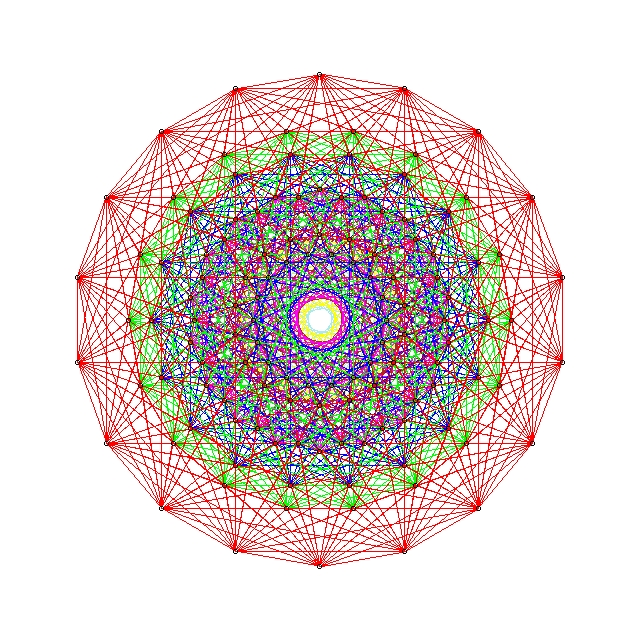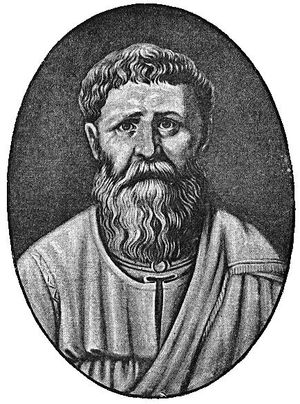| 18 November 2007 |
Reclaiming astonishment We are born agape at the world, astonished at the sky, enthralled with our own senses. We give this up voluntarily in exchange for competence. This is a manifestation of love; we need to be competent to participate in a functioning society, to further its ends, not our own. We help, we work, we provide care and service. Those of us who are very selfish will seek to restore our own ecstasy, relinquishing competence, choosing madness. For we know not that we may have both. — Josh Mitteldorf |
| 17 November 2007 |
Despotism evolves to democracy Naomi Klein reports that several Latin American countries are becoming laboratories for democratic socialism. People are banding together to take their land and resources back from multinational corporations, and the rewards of prosperity are beginning to accrue. “As people shed the collective fear that was first instilled with tanks and cattle prods, with sudden flights of capital and brutal cutbacks, many are demanding more democracy and more control over markets…citizens have renewed their faith in the power of democracy to improve their lives… “Many of the policies cropping up are familiar: nationalization of key sectors of the economy, land reform, major investments in education, literacy and healthcare. These are not revolutionary ideas, but in their unapologetic vision of a government that helps reach for equality… “It's a reverse of the logic of government outsourcing: rather than auctioning off pieces of the state to large corporations and losing democratic control, the people who use the resources are given the power to manage them, creating, at least in theory, both jobs and more responsive public services.” — from an
article in The Nation this week |
| 16 November 2007 |
“Simple” is a relative word A new candidate theory for unifying gravity with the other 3 fundamental physical forces has been published by an amateur. He titled it “An Exceptionally Simple Theory of Everything,” and posted last week at ArXiv, a public website for scientific self-publishing. Garrett Lisi is the author, and The London Daily Telegraph in its headline called him ‘Surfer Dude’. After receiving his PhD in theoretical physics from UCSD twelve years ago, he has supported himself teaching physics as an adjunct faculty member, and also working as a wilderness guide in summer and a snowboard instructor in winter. Half a century before the quantum mechanical basis for electron shell structure in atoms was understood, Dmitri Mendeleev organized all the known chemical elements into the Periodic Table, and predicted many new ones in the process. Lisi has organized all the known sub-atomic particles in a far more complicated structure called E8, and he is working on the prediction of new particles. Compellingly, the particles associated with gravity fit right in. E8 is a Lie Group, which is a scheme for organizing all the different ways you can rotate an object like a sphere and still have it look the same, and display the internal relationships among all these symmetries. E8 is the structure corresponding to a 57-dimensional sphere, and the full structure of E8 was worked out for the first time earlier this year, using an enormous computer program. “Hundreds of years of theoretical and experimental work have produced an extremely successful pair of mathematical theories describing our world. The standard model of particles and interactions described by quantum field theory is a paragon of predictive excellence. General relativity, a theory of gravity built from pure geometry, is exceedingly elegant and effective in its domain of applicability. Any attempt to describe nature at the foundational level must reproduce these successful theories, and the most sensible course towards unification is to extend them with as little new mathematical machinery as necessary. The further we drift from these experimentally verified foundations, the less likely our mathematics is to correspond with reality. In the absence of new experimental data, we should be very careful, accepting sophisticated mathematical constructions only when they provide a clear simplification. And we should pare and unite existing structures whenever possible... “There are a remarkable number of ‘coincidences’ that work exactly right to allow all known elds to be unified as parts of one connection. The factors of 1/2 and 1/4 multiplying the spin connection and frame-Higgs result in the correct expressions for the gravitational Riemann curvature and the covariant Dirac derivative in curved spacetime. The fermions t together perfectly in chiral representations under graviweak so(7; 1), and the frame-Higgs has all the correct interactions. This frame-Higgs naturally gets a 4 potential and produces a positive cosmological constant. Finally, and most impressively, the t of all elds of the standard model and gravity to E8 is very tight. The structure of E8 determines exactly the spinor multiplet structure of the known fermions. “The lack of extraneous structures and free parameters ensures testable predictions, so it will either succeed or fail spectacularly. If E8 theory is fully successful as a theory of everything, our universe is an exceptionally beautiful shape.” |
| 15 November 2007 |
Finding opportunities to build community For refugee families trying to build a new life in a new country, the English language can be a formidable barrier. Gail Weinstein prefers to see it as a rich opportunity to bring people together. She has trained a generation of English teachers to build community from the classroom outward. Personal bonds begin with revealing who we are. Weinstein has built a language curriculum around stories told by immigrants themselves. Immigrants seeking roles for themselves in an unfamiliar society face a maze of institutional expectations. Project Circle builds human relationships naturally around sharing knowledge and experience navigating the system. People tend to congregate with others in like circumstances, so relationships that cross generations and cultures are too rare. Project Shine connects students and seniors in a way that creates lasting bonds from learning and gratitude. Some of the world’s deepest wells of ethnic distrust are in Israel/Palestine, and Weinstein has been there, promoting understanding that begins in personal friendships that span the two cultures. |
| 14 November 2007 |
American music More than any other art form, musical composition is intellectually demanding and structurally integrated. A composition has to work on many levels — from the interest and beauty in the notes that sound each moment, through the harmonic progression, to the relationship and recurrence among thematic motifs. But all that work is for naught if the music doesn’t speak with an immediacy that opens the heart. Aaron Copland, musical populist, was born this day in 1900. Copland’s early works
Grohg and
Music for the Theatre show jazz influence. But he was soon to shed this
in favour of strictly classical yet modernist works. With the Great
Depression of the 1930s, when millions of Americans were unable to find
work, the appeal of abstract music began to wane. So beginning in 1938,
Copland produced a series of ballets that were to be widely heard and
musically influential:
Billy the Kid,
Rodeo and
Appalachian Spring. When
World War II began, the Cincinnati Symphony needed a patriotic American
hero, and Copland — by now one of the most
famous composers in America — wrote
A Lincoln
Portrait. For the same orchestra, he created his noble
Fanfare for the
Common Man. —from a
Sony biography |
| 13 November 2007 |
All wisdom resides within you Take wisdom where you find it, and fear not to be selective: “If you believe what you like in the gospels, and reject what you don't like, it is not the gospel you believe, but yourself.” All wisdom resides within you, and the only lasting faith comes from discovery of this source, and integration of the self from the inside out. The quote comes from Saint Augustine, born this day in 354, a number that doesn’t even have enough digits to be a year. He was not necessarily recommending selectivity; and yet there is much of what he found in his own heart which continues to speak to our sensibilities in a very different age. “Find out how much God has given you and from it take what you need; the remainder is needed by others.” “Miracles are not contrary to nature, but only contrary to what we know about nature.” “You plan a tower that will pierce the clouds? Lay first the foundation of humility. There is something in humility which strangely exalts the heart.”
This I also believe. |
| 12 November 2007 |
Prayer in time of war Thou, whose deep ways are in the sea, The tow’ring Babels that we raised We’ve looked upon the wayward face Grant us the single heart, and ruth Let darkness unto darkness tell — Alfred Noyes (mostly) |






